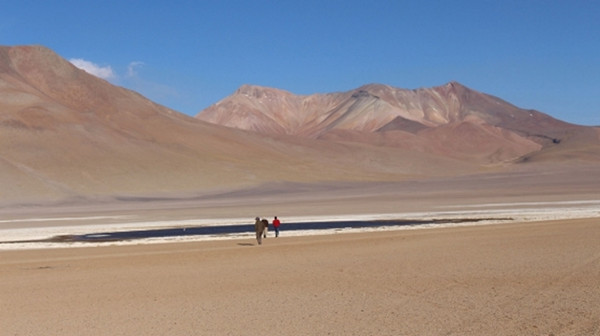IAEA highlights benefits of isotope-enabled water balance model
The International Atomic Energy Agency (IAEA) plans to discuss its isotope-enabled water balance model during its International Symposium on Isotope Hydrology that is taking place between 20 and 24 May in Vienna, Austria.

Predicting the impact of climate change on water resources far into the future (Image: L Toro/IAEA)
Water balance models describe the water cycle in terms of precipitation, evapotranspiration, stream flow and changes in water storage. Unlike many traditional water balance models, the IAEA's model uses isotopes to calibrate the model and verify its accuracy because isotopes are distinct and consistent in their behaviour.
The IAEA says the technology can help experts "accurately and reliably predict the impact of climate change on water resources far into the future". The information they collect can support decision makers in developing sustainable water use policies for generations to come, it said.
"For any country and climate, precision in these long-term water studies is important because an over or underestimation of future water supplies can have detrimental effects," said Dessie Nedaw Habtemariam, associate professor at Addis Ababa University in Ethiopia.
"If we misestimate how fast water is replenished, for example, and our estimate is too high, and then communicate these results to the decision makers, they could implement policies that result in groundwater being extracted faster than it can be recharged," Habtemariam said.
Groundwater - water in the layer of permeable rock under the earth's surface - is a primary source of fresh water for the majority of Ethiopia's population.
"This would lead to a sharp decline in available groundwater supplies, which could mean an abandonment of boreholes and may even lead to drinking water shortages," Habtemariam said.
Underestimation, on the other hand, could lead to unnecessarily stringent water policies or influence development decisions, such as hampering urban expansion due to a lack of water resources.
Tricia Stadnyk, associate professor of water resources engineering at the University of Manitoba in Canada, said many water balance models "do a very good job" at simulating the flow of water in streams, rivers and other water bodies, but are “very bad” at getting the amount of evapotranspiration right, referring to the process of evaporation of water from land and the movement of water from plants to the atmosphere.
"For climate change predictions, this is a huge problem because one of the big things we look at is evapotranspiration," Stadnyk added.
As temperatures become more extreme due to climate change, the rate of evapotranspiration does too. The more evapotranspiration, the less water on the earth's surface, and vice versa, the IAEA said. This, in turn, influences the entire annual water cycle and can lead to unpredictable extremes that swing from too little water, causing drought, to too much water, causing floods, it added.
No climate is immune to these changes, it said. They can affect a climate like Canada's, where more than 60% of the land mass is some form of permafrost and there are four distinct seasons, or one like Ethiopia's, where much of the country is tropical and the temperature remains more or less constant throughout the year. These diverse conditions can be captured by adjusting the model, which makes it globally applicable, the IAEA said.
First introduced in 2015, the model's "user-friendly, open-source" software includes pre-processing, modelling and analysis tools to make it easier to plug in data and visualise and analyse results, the IAEA said. It is designed to work with a variety of local and global datasets related to, among others, climate, vegetation, precipitation, water flow, topography and soil.
The isotopic data used for calibrating the model and validating its results generally draws on locally collected data, as well as data from global repositories, such as the IAEA's Global Network of Isotopes in Precipitations and the Global Network of Isotopes in Rivers.
- China Institute of Atomic Energy
- Nuclear Power Institute of China
- Southwestern Institute of Physics
- China Nuclear Power Operation Technology Corporation, Ltd.
- China Nuclear Power Engineering Co., Ltd.
- China Institute for Radiation Protection
- Beijing Research Institute of Uranium Geology (BRIUG)
- China Institute of Nuclear Industry Strategy (CINIS)
- China Nuclear Mining Science and Technology Corporation


